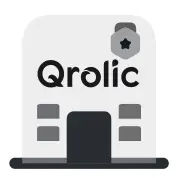DIY (Do-It-Yourself) blogging is booming. People are craving hands-on projects, creative outlets, and the satisfaction of building something with their own two hands. As a DIY blogger, your website is your storefront, your workshop, and your community hub all rolled into one. To truly connect with your audience, build a loyal following, and potentially even monetize your passion, you need a website that’s more than just a pretty face. It needs to be functional, engaging, and optimized for both user experience and search engines. Let’s dive into the essential website features that will empower your DIY blog to thrive.
Quick Summary:
- Use high-quality visuals like photos and videos.
- Make your website easy to navigate and fast on all devices.
- Build a community with comments and social media integration.
- Optimize your site for search engines and explore revenue options.
Table of Contents
- 1. Stunning Visual Showcase: High-Quality Images and Videos
- 1.1 High-Resolution Photography: Showcasing Your Craft
- 1.2 Engaging Video Tutorials: Bringing Your Projects to Life
- 1.3 Interactive Galleries and Carousels: Showcasing Multiple Projects
- 2. User-Friendly Navigation: Guiding Your Visitors
- 2.1 Clear and Intuitive Menu Structure: Making it Easy to Find Content
- 2.2 Prominent Search Bar: Enabling Quick Content Discovery
- 2.3 Category and Tag System: Organizing and Filtering Projects
- 3. Engaging Content Presentation: Captivating Your Audience
- 3.1 Readable Typography and Layout: Making Content Easy on the Eyes
- 3.2 Interactive Elements: Quizzes, Polls, and Calculators
- 3.3 Downloadable Resources: Templates, Guides, and Checklists
- 4. Community Building Features: Fostering Interaction and Loyalty
- 4.1 Comment Section: Encouraging Discussion and Feedback
- 4.2 Social Media Integration: Facilitating Sharing and Promotion
- 4.3 Forum or Membership Area: Creating a Dedicated Community Space
- 5. Ad Revenue Tools: Monetizing Your Passion
- 5.1 Display Ads: Strategically Placed Banners and Sidebar Ads
- 5.2 Affiliate Marketing: Recommending Products and Earning Commissions
- 5.3 Sponsored Content: Collaborating with Brands for Paid Posts
- 6. Essential Technical Features: Performance and Security
- 6.1 Mobile Responsiveness: Adapting to Different Screen Sizes
- 6.2 Fast Loading Speed: Minimizing Bounce Rate
- 6.3 Security Measures: Protecting Against Hackers and Malware
- 7. Search Engine Optimization (SEO): Driving Organic Traffic
- 7.1 Keyword Research: Identifying Relevant Search Terms
- 7.2 On-Page Optimization: Optimizing Content for Search Engines
- 7.3 Off-Page Optimization: Building Authority and Backlinks
- Qrolic Technologies: Your Partner in Building a Powerful DIY Blog
- Conclusion: Building Your Dream DIY Blog
1. Stunning Visual Showcase: High-Quality Images and Videos

Visual content is king, especially in the DIY world. People want to see the process, the materials, and the final product. Skimping on visuals is a recipe for losing your audience’s attention.
1.1 High-Resolution Photography: Showcasing Your Craft
-
Why is it Important? High-resolution photos allow viewers to zoom in, appreciate the details of your projects, and feel inspired. Blurry or pixelated images convey a lack of professionalism and can deter visitors.
How to Implement:
- Invest in decent equipment: You don’t need a professional-grade DSLR right away, but a good smartphone camera or an entry-level camera can make a huge difference.
- Master the art of lighting: Natural light is your best friend. Shoot near windows or outdoors during the golden hours (sunrise and sunset) for soft, flattering light. Avoid harsh midday sun, which can create strong shadows.
- Learn basic editing skills: Free software like GIMP or online tools like Canva can help you adjust brightness, contrast, and colors to make your photos pop.
- Showcase the entire process: Capture photos of each step of your DIY project, from gathering materials to the final flourish.
- Optimize images for web: Compress images using tools like TinyPNG or ImageOptim to reduce file size without sacrificing quality. This will improve your website’s loading speed.
Benefits:
- Increased engagement and time on site
- Improved perceived value of your content
- Higher chances of social sharing
1.2 Engaging Video Tutorials: Bringing Your Projects to Life
-
Why is it Important? Videos are incredibly effective for demonstrating complex steps or techniques. They provide a more immersive and engaging experience than static images alone. Videos are especially useful for showcasing tutorials.
How to Implement:
- Plan your shots: Create a storyboard or outline to guide your video shooting process. This will help you stay organized and ensure you capture all the necessary steps.
- Invest in a tripod and microphone: Stable footage and clear audio are crucial for a professional-looking video.
- Edit your videos effectively: Use video editing software like Adobe Premiere Rush (mobile and desktop) or DaVinci Resolve (free version available) to cut out unnecessary footage, add transitions, and include text overlays.
- Keep videos concise: Aim for short, focused videos that get straight to the point. People have short attention spans, especially online.
- Embed videos on your website: Use platforms like YouTube or Vimeo to host your videos and then embed them directly into your blog posts.
- Create engaging thumbnails: Design eye-catching thumbnails that accurately represent your video content and entice viewers to click.
Benefits:
- Improved understanding and retention of information
- Increased audience engagement and loyalty
- Enhanced credibility and authority
- Opportunity for monetization through YouTube ads or sponsorships
1.3 Interactive Galleries and Carousels: Showcasing Multiple Projects
-
Why is it Important? Galleries and carousels allow you to showcase multiple images or projects in a visually appealing and organized manner. They’re a great way to highlight your portfolio and provide visitors with a quick overview of your work.
How to Implement:
- Choose a gallery plugin or theme that suits your style: Many wordpress plugins and themes offer built-in gallery and carousel features.
- Organize your images into relevant categories: This will make it easier for visitors to find the projects they’re interested in.
- Use captions to provide context: Add short captions to each image to explain what it is or what step it represents.
- Ensure galleries are mobile-friendly: Test your galleries on different devices to ensure they display correctly and are easy to navigate on smaller screens.
Benefits:
- Visually appealing presentation of your work
- Improved user experience and navigation
- Increased time on site and engagement
2. User-Friendly Navigation: Guiding Your Visitors
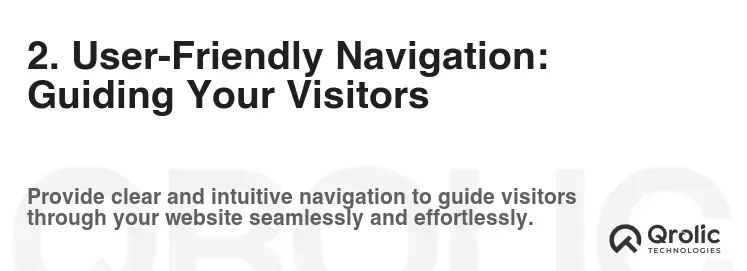
A well-designed website is like a well-organized workshop – everything has its place, and it’s easy to find what you need. User-friendly navigation is paramount for keeping visitors engaged and preventing them from bouncing away in frustration.
2.1 Clear and Intuitive Menu Structure: Making it Easy to Find Content
-
Why is it Important? A clear menu structure helps visitors quickly understand what your website is about and how to find the information they’re looking for. A confusing or cluttered menu can be overwhelming and frustrating.
How to Implement:
- Keep it simple: Limit the number of menu items to avoid overwhelming visitors.
- Use clear and descriptive labels: Use language that is easy to understand and accurately reflects the content of each page or category.
- Organize menu items logically: Group related items together and arrange them in a way that makes sense.
- Use dropdown menus sparingly: Dropdown menus can be useful for organizing a large number of items, but avoid creating too many levels of nested menus.
- Consider using a sticky menu: A sticky menu remains fixed at the top of the screen as the user scrolls, making it easy to access the menu at any time.
Benefits:
- Improved user experience and navigation
- Increased time on site and engagement
- Reduced bounce rate
- Improved search engine ranking (as search engines can easily crawl and index your site)
2.2 Prominent Search Bar: Enabling Quick Content Discovery
-
Why is it Important? A search bar allows visitors to quickly find specific content on your website by entering keywords or phrases. This is especially useful for websites with a large amount of content.
How to Implement:
- Place the search bar in a prominent location: The search bar should be easily visible and accessible on every page of your website. Common locations include the header, sidebar, or footer.
- Use a clear and concise label: Label the search bar with a clear and descriptive word, such as “Search” or “Find.”
- Ensure the search function is accurate and efficient: The search function should return relevant results quickly and accurately.
- Consider using autocomplete suggestions: Autocomplete suggestions can help users find what they’re looking for more quickly and easily.
Benefits:
- Improved user experience and content discovery
- Increased time on site and engagement
- Reduced bounce rate
2.3 Category and Tag System: Organizing and Filtering Projects
-
Why is it Important? Categories and tags help you organize your blog posts into logical groups, making it easier for visitors to find the projects they’re interested in.
How to Implement:
- Develop a consistent categorization strategy: Choose a set of categories that accurately reflect the main topics covered on your blog.
- Use tags to further refine your content: Tags can be used to identify specific materials, techniques, or styles used in your projects.
- Link categories and tags to dedicated archive pages: Create archive pages that display all the posts associated with a particular category or tag.
- Display categories and tags prominently on your website: Consider adding a category or tag cloud to your sidebar or footer.
Benefits:
- Improved organization and content discovery
- Enhanced user experience and navigation
- Improved search engine optimization (SEO)
3. Engaging Content Presentation: Captivating Your Audience

The way you present your content is just as important as the content itself. Use formatting, visuals, and interactive elements to keep your audience engaged and coming back for more.
3.1 Readable Typography and Layout: Making Content Easy on the Eyes
-
Why is it Important? Readable typography and layout are essential for ensuring that your content is easy to read and understand. Poor typography and layout can make your website look unprofessional and deter visitors from reading your content.
How to Implement:
- Choose a font that is easy to read: Select a font that is clear, legible, and appropriate for your brand.
- Use a consistent font size and style: Stick to a consistent font size and style throughout your website to create a cohesive look and feel.
- Use sufficient line height and letter spacing: Adjust the line height and letter spacing to improve readability and prevent eye strain.
- Use headings and subheadings to break up the text: Headings and subheadings help to organize your content and make it easier to scan.
- Use short paragraphs and bullet points: Short paragraphs and bullet points make your content more digestible and easier to read on small screens.
- Use white space effectively: White space (also known as negative space) helps to create a clean and uncluttered layout and improve readability.
Benefits:
- Improved readability and comprehension
- Enhanced user experience and engagement
- Reduced eye strain
3.2 Interactive Elements: Quizzes, Polls, and Calculators
-
Why is it Important? Interactive elements can add a layer of engagement to your website, encouraging visitors to spend more time on your site and interact with your content.
How to Implement:
- Use relevant quizzes: Create quizzes that test your visitors’ knowledge of DIY topics or help them choose the right project for their skill level.
- Run polls to gather feedback: Use polls to gather feedback on your content or to gauge your audience’s interest in different DIY projects.
- Embed calculators to help with project planning: Embed calculators that help visitors estimate material costs or calculate dimensions for their projects.
- Use plugins or third-party tools to create interactive elements: Many WordPress plugins and online tools can help you create interactive elements without needing to write code.
Benefits:
- Increased engagement and time on site
- Valuable feedback from your audience
- Opportunity to provide useful tools and resources
3.3 Downloadable Resources: Templates, Guides, and Checklists
-
Why is it Important? Offering downloadable resources is a great way to provide value to your audience and establish yourself as an expert in your field.
How to Implement:
- Create high-quality resources that are relevant to your audience: Offer templates, guides, checklists, or other resources that will help your visitors with their DIY projects.
- Offer resources for free in exchange for an email address: This is a great way to build your email list and nurture leads.
- Promote your resources prominently on your website: Make sure your resources are easy to find and download.
- Use a professional design for your resources: A well-designed resource will look more appealing and professional.
Benefits:
- Increased engagement and time on site
- Lead generation and email list building
- Enhanced credibility and authority
4. Community Building Features: Fostering Interaction and Loyalty
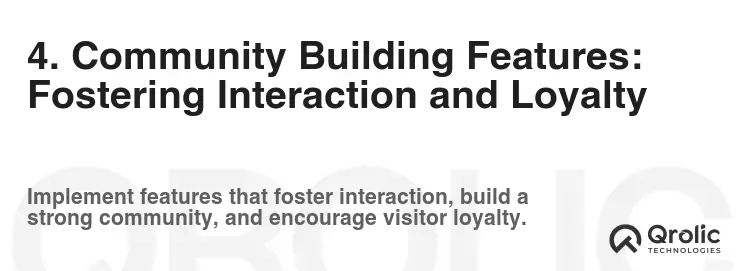
Building a community around your DIY blog is crucial for long-term success. It creates a sense of belonging, encourages interaction, and fosters loyalty among your readers.
4.1 Comment Section: Encouraging Discussion and Feedback
-
Why is it Important? A comment section allows visitors to share their thoughts, ask questions, and engage in discussions about your blog posts. It creates a sense of community and provides valuable feedback.
How to Implement:
- Enable comments on your blog posts: Most blogging platforms have built-in commenting systems.
- Moderate comments to prevent spam and abusive content: Use a moderation tool to filter out unwanted comments and ensure that discussions remain civil and respectful.
- Respond to comments and engage in conversations: Show your readers that you value their input by responding to their comments and engaging in conversations.
- Consider using a third-party commenting system: Third-party commenting systems like Disqus or Commento offer additional features and customization options.
Benefits:
- Increased engagement and interaction
- Valuable feedback and insights
- Stronger sense of community
4.2 Social Media Integration: Facilitating Sharing and Promotion
-
Why is it Important? Social media integration makes it easy for visitors to share your content on their favorite social media platforms, expanding your reach and driving traffic to your website.
How to Implement:
- Add social sharing buttons to your blog posts: Use social sharing plugins or add custom code to display buttons that allow visitors to share your content on platforms like Facebook, Twitter, Pinterest, and LinkedIn.
- Embed social media feeds on your website: Display your latest social media posts on your website to showcase your activity and encourage visitors to follow you.
- Promote your website on social media: Share your blog posts, updates, and other content on your social media channels to drive traffic to your website.
Benefits:
- Increased reach and visibility
- Increased website traffic
- Improved brand awareness
4.3 Forum or Membership Area: Creating a Dedicated Community Space
-
Why is it Important? A forum or membership area provides a dedicated space for your audience to connect with each other, share their own projects, and get support from you and other members.
How to Implement:
- Choose a forum or membership plugin or platform: Many WordPress Plugins and online platforms offer forum and membership features.
- Create clear guidelines and rules for your community: Establish clear guidelines to ensure that your community remains a safe and welcoming space for everyone.
- Actively moderate your community: Monitor discussions, respond to questions, and address any issues that arise.
- Offer exclusive content or benefits to members: Provide exclusive content, discounts, or other benefits to encourage visitors to join your community.
Benefits:
- Stronger sense of community
- Increased engagement and loyalty
- Opportunity for monetization through membership fees
5. Ad Revenue Tools: Monetizing Your Passion

Turning your DIY blog into a source of income is a dream for many bloggers. Implementing the right ad revenue tools can help you achieve this without compromising the user experience.
5.1 Display Ads: Strategically Placed Banners and Sidebar Ads
-
Why is it Important? Display ads are a common way to monetize a blog. By strategically placing ads on your website, you can earn revenue each time a visitor views or clicks on an ad.
How to Implement:
- Join an ad network: Sign up with an ad network like Google AdSense, Mediavine, or AdThrive to access a wide range of advertisers and ad formats.
- Place ads strategically on your website: Experiment with different ad placements to find what works best for your audience. Common locations include the header, sidebar, footer, and within the content of your blog posts.
- Optimize ad settings to maximize revenue: Use ad network settings to target your ads to specific audiences and optimize for higher click-through rates.
- Be mindful of ad placement to avoid disrupting the user experience: Avoid placing too many ads on your website or using intrusive ad formats that can annoy visitors.
Benefits:
- Passive income stream
- Relatively easy to implement
5.2 Affiliate Marketing: Recommending Products and Earning Commissions
-
Why is it Important? Affiliate marketing allows you to earn commissions by recommending products to your audience. When a visitor clicks on your affiliate link and makes a purchase, you receive a percentage of the sale.
How to Implement:
- Join affiliate programs related to your niche: Sign up with affiliate programs offered by companies that sell products or services that are relevant to your DIY projects.
- Promote affiliate products in your blog posts and social media: Write reviews, create tutorials, or simply mention affiliate products in your blog posts and social media updates.
- Use clear and conspicuous disclosures: Be transparent with your audience by disclosing that you are using affiliate links.
- Choose products that you genuinely believe in: Only recommend products that you have used and would recommend to your friends and family.
Benefits:
- Potential for high earnings
- Opportunity to promote products that you love
- Build trust with your audience by providing valuable recommendations
5.3 Sponsored Content: Collaborating with Brands for Paid Posts
-
Why is it Important? Sponsored content involves collaborating with brands to create blog posts, videos, or social media updates that promote their products or services. You are typically paid a fee for creating this content.
How to Implement:
- Build a strong brand and audience: Brands are more likely to collaborate with bloggers who have a strong brand and a engaged audience.
- Reach out to brands that align with your values and niche: Contact brands that you admire and that offer products or services that are relevant to your audience.
- Negotiate fair compensation: Research industry standards and negotiate a fair fee for your work.
- Create high-quality content that is authentic and engaging: Ensure that your sponsored content is well-written, visually appealing, and resonates with your audience.
- Disclose that your content is sponsored: Be transparent with your audience by disclosing that your content is sponsored.
Benefits:
- Significant income potential
- Opportunity to work with brands that you admire
- Creative freedom
6. Essential Technical Features: Performance and Security
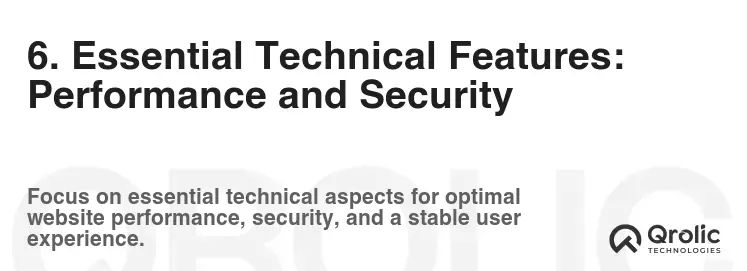
Beyond the visual appeal and engaging content, certain technical features are crucial for ensuring your website’s performance, security, and overall user experience.
6.1 Mobile Responsiveness: Adapting to Different Screen Sizes
-
Why is it Important? Mobile responsiveness ensures that your website looks and functions well on all devices, including smartphones, tablets, and desktops. With the majority of internet users accessing websites on mobile devices, it’s essential to have a mobile-friendly website.
How to Implement:
- Choose a responsive theme or design: Select a theme or design that is specifically designed to be responsive.
- Use flexible layouts and images: Use CSS techniques to create flexible layouts and images that adapt to different screen sizes.
- Test your website on different devices: Use online tools or emulators to test your website on different devices and ensure that it displays correctly.
Benefits:
- Improved user experience on mobile devices
- Increased engagement and time on site
- Improved search engine ranking (as Google prioritizes mobile-friendly websites)
6.2 Fast Loading Speed: Minimizing Bounce Rate
-
Why is it Important? Fast loading speed is crucial for keeping visitors engaged and preventing them from bouncing away in frustration. slow loading speeds can damage your search engine ranking and negatively impact your user experience.
How to Implement:
- Optimize images: Compress images to reduce file size without sacrificing quality.
- Use a content delivery network (CDN): A CDN stores copies of your website’s files on servers around the world, allowing visitors to access your website from a server that is close to them.
- Minimize HTTP requests: Reduce the number of HTTP requests by combining files, using CSS sprites, and minimizing the use of external scripts.
- Enable browser caching: Enable browser caching to allow visitors’ browsers to store copies of your website’s files, so they don’t have to download them every time they visit your website.
- Choose a reliable hosting provider: Select a hosting provider that offers fast servers and reliable uptime.
Benefits:
- Improved user experience and engagement
- Reduced bounce rate
- Improved search engine ranking
6.3 Security Measures: Protecting Against Hackers and Malware
-
Why is it Important? Security measures are essential for protecting your website from hackers and malware. A hacked website can damage your reputation, compromise your data, and negatively impact your search engine ranking.
How to Implement:
- Use strong passwords: Use strong passwords for your website, hosting account, and other online accounts.
- Keep your software up to date: Regularly update your website’s software, including your content management system (CMS), themes, and plugins.
- Install a security plugin: Use a security plugin to protect your website from common security threats.
- Use an SSL certificate: An SSL certificate encrypts the data transmitted between your website and visitors’ browsers, protecting sensitive information from being intercepted.
- Back up your website regularly: Regularly back up your website to ensure that you can restore it in case of a security breach or other disaster.
Benefits:
- Protection against hackers and malware
- Improved data security and privacy
- Enhanced reputation and trust
7. Search Engine Optimization (SEO): Driving Organic Traffic
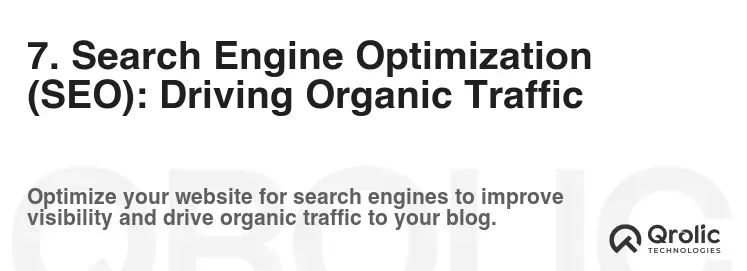
Even the most beautifully designed and content-rich website is useless if no one can find it. SEO is the art and science of optimizing your website to rank higher in search engine results pages (SERPs), driving organic traffic to your site.
7.1 Keyword Research: Identifying Relevant Search Terms
-
Why is it Important? Keyword research helps you identify the terms that people are using to search for DIY projects and information online. By incorporating these keywords into your website’s content, you can improve your chances of ranking higher in search results.
How to Implement:
- Use keyword research tools: Use keyword research tools like Google Keyword Planner, Ahrefs, or SEMrush to identify relevant keywords for your niche.
- Analyze your competitors’ keywords: See what keywords your competitors are ranking for and try to target similar terms.
- Think like your audience: Consider what terms your audience would use to search for your content.
- Focus on long-tail keywords: Long-tail keywords are longer, more specific phrases that have lower search volume but higher conversion rates.
Benefits:
- Improved search engine ranking
- Increased organic traffic
- Higher conversion rates
7.2 On-Page Optimization: Optimizing Content for Search Engines
-
Why is it Important? On-page optimization involves optimizing the content and structure of your website to improve its search engine ranking.
How to Implement:
- Use keywords in your title tags and meta descriptions: Title tags and meta descriptions are short summaries of your web pages that appear in search results. Include your target keywords in these elements to improve your chances of ranking higher.
- Use keywords in your headings and subheadings: Use headings and subheadings to break up your content and make it easier to read. Include your target keywords in these elements to improve your search engine ranking.
- Use alt tags for your images: Alt tags are descriptions of your images that are used by search engines to understand what the images are about. Include your target keywords in your alt tags to improve your search engine ranking.
- Create high-quality, original content: Search engines reward websites that create high-quality, original content.
Benefits:
- Improved search engine ranking
- Increased organic traffic
- Enhanced user experience
7.3 Off-Page Optimization: Building Authority and Backlinks
-
Why is it Important? Off-page optimization involves building your website’s authority and reputation by earning backlinks from other websites. Backlinks are links from other websites to your website.
How to Implement:
- Create high-quality content that people will want to link to: The best way to earn backlinks is to create high-quality content that other websites will want to link to.
- Guest blog on other websites: Guest blogging involves writing articles for other websites in your niche and including a link back to your website in your author bio.
- Participate in online communities: Participate in online communities and forums related to your niche and include a link back to your website in your profile.
- Promote your content on social media: Share your blog posts and other content on social media to increase its visibility and attract backlinks.
Benefits:
- Improved search engine ranking
- Increased organic traffic
- Enhanced brand awareness
Qrolic Technologies: Your Partner in Building a Powerful DIY Blog

Creating and maintaining a successful DIY blog requires a blend of creativity, technical expertise, and marketing savvy. If you’re feeling overwhelmed by the technical aspects of website development, design, or SEO, Qrolic Technologies is here to help.
Qrolic Technologies (https://qrolic.com/) offers a comprehensive suite of services tailored to the needs of DIY bloggers, including:
- Website Design and Development: We create custom, visually appealing, and user-friendly websites that showcase your projects and reflect your brand. We ensure that your website is mobile-responsive, fast-loading, and optimized for search engines.
- SEO Services: Our SEO experts help you identify relevant keywords, optimize your content, and build backlinks to improve your search engine ranking and drive organic traffic to your website.
- Content Creation: We can assist with creating high-quality blog posts, tutorials, and videos that engage your audience and establish you as an authority in your niche.
- Website Maintenance and Support: We provide ongoing maintenance and support to ensure that your website is secure, up-to-date, and performing optimally.
Let Qrolic Technologies handle the technical details so you can focus on what you do best – creating amazing DIY projects and inspiring your audience. Contact us today to learn how we can help you build a powerful and successful DIY blog.
Conclusion: Building Your Dream DIY Blog

Creating a successful DIY blog is a journey that requires dedication, creativity, and a strategic approach to website design and functionality. By implementing the top website features discussed in this article, you can create a website that not only showcases your amazing DIY projects but also engages your audience, builds a thriving community, and potentially even generates revenue. Remember to prioritize user experience, optimize for search engines, and leverage the power of visuals and interactive elements. With the right features and a passion for sharing your DIY creations, you can build a blog that inspires, empowers, and connects with people around the world. Don’t be afraid to experiment, adapt, and continually improve your website to meet the evolving needs of your audience and the ever-changing landscape of the internet. Good luck building your dream DIY blog!



